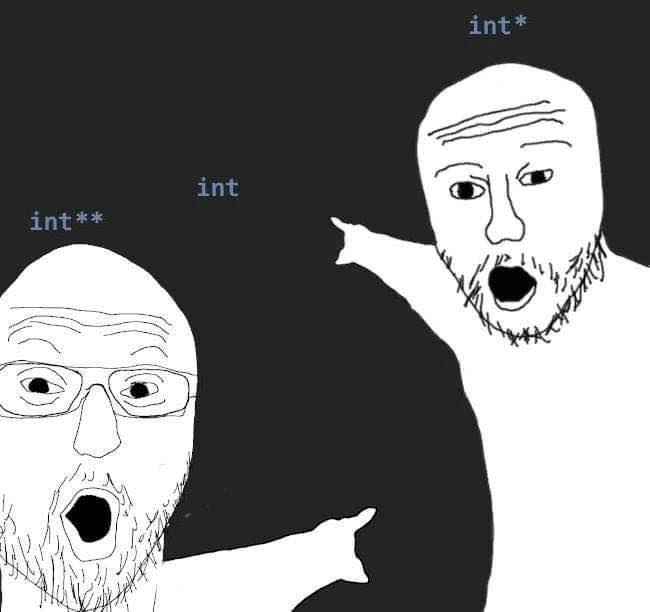- cross-posted to:
- linux@lemmy.world
- cross-posted to:
- linux@lemmy.world
You’ve heard the “prophecy”: next year is going to be the year of the Linux desktop, right? Linux is no longer the niche hobby of bearded sysadmins and free software evangelists that it was a decade ago! Modern distributions like Ubuntu, Pop!_OS, and Linux Mint are sleek, accessible, and — dare I say it — mainstream-adjacent.
Linux is ready for professional work, including video editing, and it even manages to maintain a slight market share advantage over macOS among gamers, according to the Steam Hardware & Software Survey.
However, it’s not ready to dethrone Windows. At least, not yet!
And even if drivers do exist, they may not include the extra software that comes bundled with drivers on Windows. The most obvious example is NVIDIA GeForce Experience suite.
This goes in the pro column if you ask me. I would pay extra for a printer that just has vanilla drivers and no software suite.
Instead, it’s about the irretrievable, sunken costs associated with a loss of incompatible software and hardware that the person would no longer be able to use after switching to Linux.
… When windows has made its latest release incompatible with most existing hardware out there because of some arbitrary requirements. I have not seen any major hardware compatibility issues with Linux in quite a few years now. It is not common at all for some hardware to not work. In less then about a year Windows in going to make a huge amount of existing hardware unusable for supported versions of windows. That alone will help with Linuxs market share.
Most arguments in this article are overblown out very outdated. Software compatibility is a issue, but much less then it used to be. Big companies like Adobe and Microsoft which refuse to support Linux are also starting to alienate their user base making the cost of switching more and more apprising all the while the linux friendly alternatives are growing in popularity. And as I said above hardware is not a big issue these days and about to be a big issue for Windows systems.
It does touch berfily on the main point sa to why linux os not very popular ATM:
Most people don’t even know what Linux is because they’ve never seen it pre-installed on a laptop in a store. But I digress.
That is the problem, defaults. Most people don’t care or want to change their OS and most people have hardware and workloads that are easily compatible to Linux. It is really only a minority of people that require things that Windows supports better - sadly those are also the types of people more willing to break from the default OS.
The year of the Linux desktop won’t come until we, the Linux community, find a way to balance the cost of switching with the future benefits of daily driving Linux from the perspective of an average user. Until then, Linux will remain more like a niche thing, made by enthusiasts for enthusiasts.
No it wont. The normal user will only switch when they are forced to by their current system stopping working or new hardware comes with Linux by default. The average user is your aunt how uses their computer to log into facebook or look up recipes online. A professional that requires adobe suite is not an average user and only makes up a tiny fraction of the overall userbase. It would be nice to support their workloads, but even if adobe was fully supported on Linux that would still only be a fraction more users that would be willing to move. For the average user it is the defaults that their system comes with that makes the biggest difference.
However, it’s not ready to dethrone Windows
Is this how we define “the year or the Linux desktop”? The year when the market share is larger than Windows? That’s setting the bar a bit high, no?
For me, the year or the Linux desktop was 2007 or so. That’s when I started using it instead of Windows. 🤷♂️
You’ve heard the “prophecy”: next year is going to be the year of the Linux desktop, right?
Yes, every year since 1997
Let’s say there are 2 billion desktop computers in the world and that Linux is installed on 3% of them.
That is 60 million Linux desktop users.
That is more than enough to sustain a vibrant ecosystem. Linux does not really need more market share to keep being an excellent option.
What’s your opinion on the european movement?
Just asking because you don’t mention it
These are probably the biggest reasons, but I think even after literally decades of development the actual desktop is still far behind Windows XP in many respects.
For example today I wanted to add a “start menu” shortcut to a program I had downloaded. The most popular answer is to *manually create a
.desktopfile and copy it to some obscure dot directory! Hilarious. Even Windows 3.1 had a built-in GUI for this.Ok so there is a GUI to do it, but it isn’t actually integrated into desktops and isn’t installed by default. You have to install it separately.
It’s the same for things like WiFi settings! There are some settings in GNOME but most are hidden in the third party
nm-connection-editor(from memory) and of course GNOME doesn’t have an “advanced settings” button to open that.There are so many of these paper cuts I think Linux would be quite a frustrating experience for many people even if if had Windows-level hardware support.
I also can’t see this changing any time soon. Not that many Linux devs actually care about this sort of thing and many of them don’t even understand that it is a problem in the first place. Cue replies.
I cannot think of a single time I have manually created a
.desktopfile rather than using a GUI in the decades I have used Linux, and it has been a long time since I have even needed to edit the Start Menu at all installing packages takes care of it for me. Furthermore, even if this is a “paper cuts”, I doubt that people spend a lot of their time adding Start Menu items; by contrast, in Windows I get to experience the paper cuts of advertisements every single time I want to launch a program, and if I mistype the name of the program and press enter, then every single time I get to experience another paper cuts of launching Edge (which is not my default browser) to do a search in Bing (which is not my default search engine) for my typo.Likewise, for the last few years that I have been using WiFi with Linux, I have never once had to go outside of the GUI to adjust the settings.
I won’t say that Linux has no annoyances, but I find using it to be a significantly more pleasant experience than using Windows overall, and my wife has never had a problem with it either.
I really do not think that these “paper cuts” are representative of peoples’ general experiences with Linux.
Every OS has paper cuts. You learn to live with them over time as you have no other choice. When you switch OS it cuts in different ways and they feel fresher then the old ones you had gotten used to over time. It does not matter if you switch from Windows to Linux, Linux to Windows or to or from MacOS. They all have papercuts.
That’s completely fair!
Just to be clear, it’s not that I think that Linux is without problems or idiosyncrasies, but rather I think that they are more like the experience you are describing than evidence that Linux is fundamentally broken compared to Windows.
For example today I wanted to add a “start menu” shortcut to a program I had downloaded.
I get what you’re saying, but this is like “I tried to use Linux like it was Windows, and it was hard.” It’s a different OS. Go on, move the taskbar of Windows 11 to the left or right edges of the screen. I can do that on Linux, why can’t I do that on Windows? It’s not even hard, it’s just plain impossible. If you try to do things manually in Linux, it’s not going to be intuitive. It will feel like editing the Registry in Windows. Unintuitive and like arcane magic.
Fuck yes. I switched to Linux after Windows got all control freaky over my task bar. On Linux I can have 30 task bars if I want, 100 task bars. I can setup a mouse-task bar that opens radially around my cursor. On mac I can put that shit left, right, bottom, which is something, and i can resize it which is the bare fucking minimum.
On Windows? Bottom. Full width. Don’t like it? Fuck you. Shut up and cope.
Oh but there’s a registry hack to… nope. Not dealing with that shit again after I tried to make the fucking icons smaller AND IT BROKE THE TASK BAR.
Love that proprietary feeling, those crisp millions of dollars of development being used to innovate and develop a robust and perfected operating system.
These are why I use FVWM and set up everything by hand, better this than feeling helpless in a supposedly user-friendly environment.
But I think under normal usable desktops, like MATE, you can do such things easily enough.
Gnome is garbage lol
Hardware support really sucks, as many hardware manufacturers only care about supporting M$ Windows.
There’s a way to force them to provide drivers for Linux, let’s say the trade commission in any country forces all devices to have drivers for Linux.
I think if you wiped everyone’s prior experience and knowledge and all that stuff, like just wiped the slate clean and presented all the OSes for what they are and let everyone choose which on they got to use, things would land pretty much where they are right now. Linux is generally way easier than it was 10 years ago but it’s still far too tricky for most normal users. If it’s too difficult for them to use then they effectively don’t have a computer and it’s useless to them. Linux may be free but after dropping £1000+ on a laptop people don’t mind so much paying an extra £70 for the software.
The two most important things to normal people are good looks and ease of use and Linux comes in last in both of those races.
Linux isn’t for normal people, it’s made by nerds for nerds.
Could you be more specific about exactly what about Linux makes it so difficult to use that a typical person would not be able to use their computer at all if it were installed on it?




